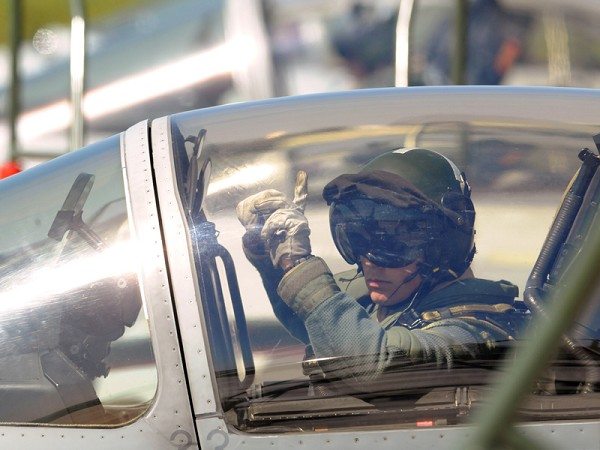A new type of laser eye protection (LEP) for pilots is being tested by the Ministry of Defence.
The Defence Science and Technology Laboratory (Dstl) has been working with Defence Equipment and Support (DE&S) to evaluate and assess the specially designed spectacles.
The LEPs can filter out different wavelengths of light from the spectrum, including those used in various laser weapons and laser pens, which are becoming increasingly available from the internet.
Dr Craig Williamson, Principal Scientist at Dstl, explained the rationale behind the project work:
“There are an increasing number of incidents of inexpensive lasers being used to distract pilots, so we have been researching advanced technologies to mitigate this hazardous and potentially lethal distraction,” he said.
Unlike conventional LEP, which tends to filter out and block just one wavelength from the colour spectrum, the prototype spectacles, made by Glasgow-based company Thin Film Solutions, can filter out a range of different laser wavelengths, allowing greater operational benefits and flexibility for pilots.
This is achieved by a composite structure comprising a polycarbonate layer, made with a special absorbing optical dye, bonded to a thin glass lens with a special coating to reflect certain wavelengths.
The project work on the LEP is a good example of how funding from DE&S’s equipment programme can be used to evaluate technology and assess it for potential benefits and uses.
Pete Douglass of DE&S explained:
“With funding from the equipment programme we were able to ask Dstl to evaluate this new LEP against older, more conventional filters in order to understand the development needs before they would be ready for service,” he said.
“In the case of the LEP, the research highlighted some clear strengths, whilst also showing some weaknesses of the technology which we are now addressing with future research.”
The work has also benefited from an established partnership between Dstl and the United States Air Force, with testing having taken place in May of this year.
Dr Williamson said:
“The bilateral work at the United States Air Force Tri-Service Research Laboratory in San Antonio proved to be invaluable.
“The results from this human performance testing on spatial detection and colour perception have set the benchmark for future work, and we’re hoping that further bilateral funding will be available to research the next generation of eye protection in the coming years.”
Further testing is to be conducted later this year, including optical performance and environmental testing by Dstl, and laser dazzle and performance testing at QinetiQ.











